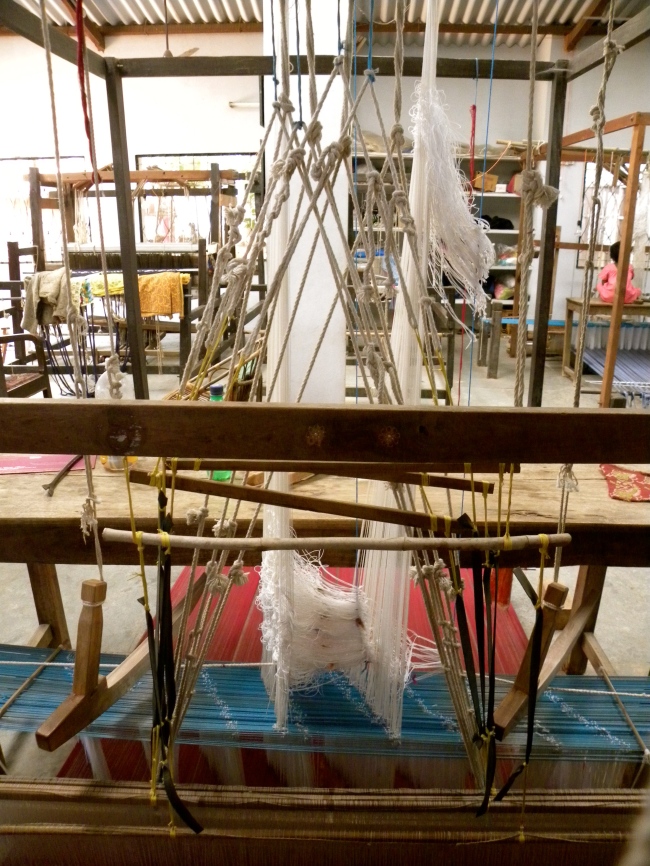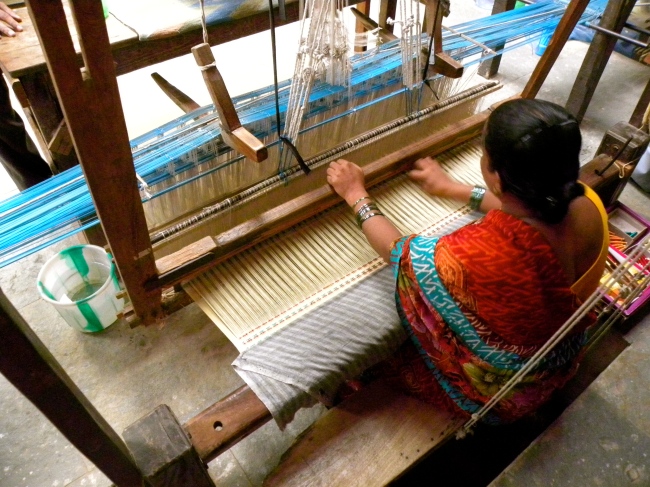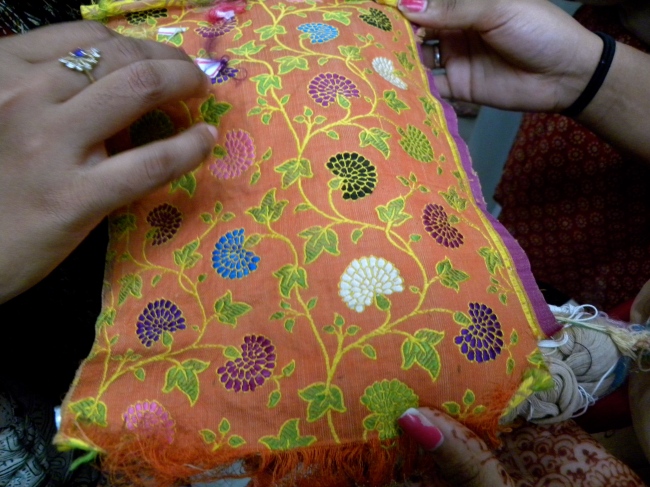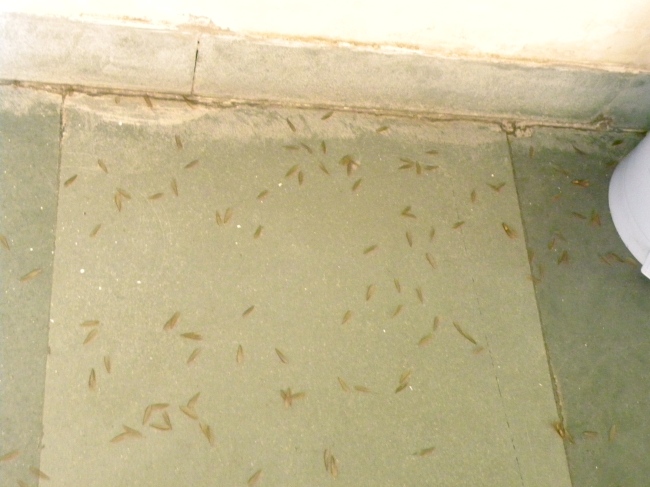So, last night, I was watching Gilmore Girls (shout out to Jay, the Paris to my Rory), and I heard tapping on the window. Oh, how nice, another gentle monsoon rain, I thought. And then I got up to use the bathroom. Our hallway was swarming with what looked like giant flying termites–the rain tapping on my window? Yeah, that was hundreds of their wings beating against the screen. And then they started detaching their wings and crawling under our door. There are about 10 of them currently smashed on my floor (thank you, Teva’s, for thick soles). We stuffed a towel under our door, went to bed, and woke to hundreds of wings scattered around Tagore. Bhavani explained that the bugs are known as “usillu” in Telugu, or rain flies. They come out following the rains, crawl around for a while, then die within 24 hours. I won’t miss them when I come back to the US.
(I didn’t take that last one, I just wanted to give you a better sense of how disgusting they were)
The past week has involved a lot of frustration and complaining. Expectations not met, plans not fulfilled, and now, plans completely changed. We’ve been attending lectures each day for the past week at the Tata Institute for Social Sciences, learning about various aspects of women’s rights, from history of women’s education to women’s empowerment movements in India. It’s been difficult sitting in an un-air conditioned room listening to a heavily-accented lecture for two hours, but they do serve us chai in the afternoons. Some of the interesting facts I’ve learned about India:
1. Because of the high rates of female infanticide and fetacide, it is now illegal for a doctor to tell a pregnant woman what the sex of her child will be.
2. During the Indian Social Reform Movement, reformers (men) worked for women’s education, based on an argument that in the Vedic “Golden Age” (think ancient times), many powerful women were highly educated. But the catch? Mughal rulers were the ones that interrupted the Golden Age, so this 19th century reform movement actually created a lot of anti-Muslim hostility as they looked back at the past.
3. Before laws began to ban it, the vast majority of Indian women were married by age 11.
4. India is the largest producer of processed nuts for export.
5. In America, we’re all about ethical practices. But in the East, where we outsource all of our production, the unethical practices are simply shoved under the rug, and women and children are forced to work in very dangerous conditions–without legal recognition as workers, meaning no legal protections–so that the process appears ethical on the surface.
Today, though, we finally visited the school where we will be volunteering as English teachers for the next 7 weeks. Initially, our plan was to focus specifically on women’s empowerment and its relation to education policy, including two weeks spent in a rural village interviewing women about their societal roles. But we couldn’t wait for 4 weeks to finally work in the field: we needed active engagement, not just more time spent in our international dorm. Thankfully, our DukeEngage coordinator, Leela Prasad, was able to find us a connection to a privately-funded school, in which all students attend for free thanks to generous funding from various NGOs. The school is located in a strange neighborhood, incorporating everything from slums to gated stone mansions, all on a hill overlooking the entire city of Hyderabad. Once we got out of the car, the stares began–people would stop in their tracks just to watch us walk. In order to enter the school, we had to walk through a construction zone–apparently, half of the school is in use while the rest is being completed. The classrooms are probably about half the size of my dorm room, incorporating maybe 30 students, maybe even more. But, when we walked in to introduce ourselves to a 10th standard class (13-year-olds), the students jumped up energetically to tell us about what they’re studying and how much they like school. The girls all wear their hair in two braids, and their uniforms are a bright, clean checkered green. We still don’t know a lot about what exactly volunteering will be like–we’re supposed to work with 8th and 9th standard students on their English skills, but also act as one-on-one mentors with students for the summer. Considering their limited English and my very limited Telugu, this may involve a lot of awkward silence and/or frustrated gesturing. But I’m excited to get out of my dorm and do something with my free time here.
After visiting the school, we visited a local weaving workshop run by Suraiya Hasan Bose. The workshop is the only one in India to still make certain kinds of handwoven fabrics, as many of the skilled weavers were put out of business when the luxurious royal lifestyles of the Nizams became out-of-place in modern India. Some of the saris woven here take up to a year and a half to make, each thread carefully put into place by 1 to 3 women working at a single loom. Most of the weavers at this organization are women that have been widowed or otherwise deserted by their husbands, leaving them with little social capital in Indian society. All proceeds from the sale of these incredible pieces goes directly back to the program. All in all, a pretty enlightening day in terms of women’s empowerment issues in India.
 And this is how complicated a single loom is.
And this is how complicated a single loom is.

 This piece of cloth is over 200 years old, and yet the silk is still as brightly colored as any brand-new item you could buy today.
This piece of cloth is over 200 years old, and yet the silk is still as brightly colored as any brand-new item you could buy today.



